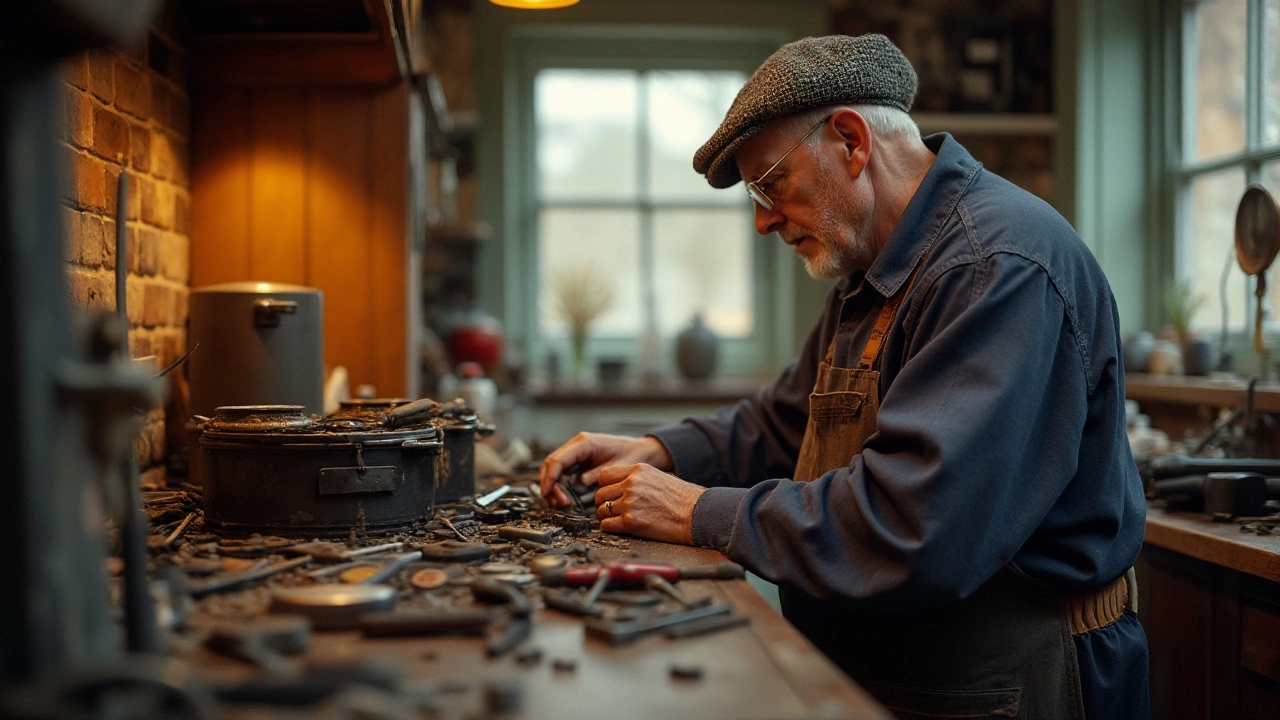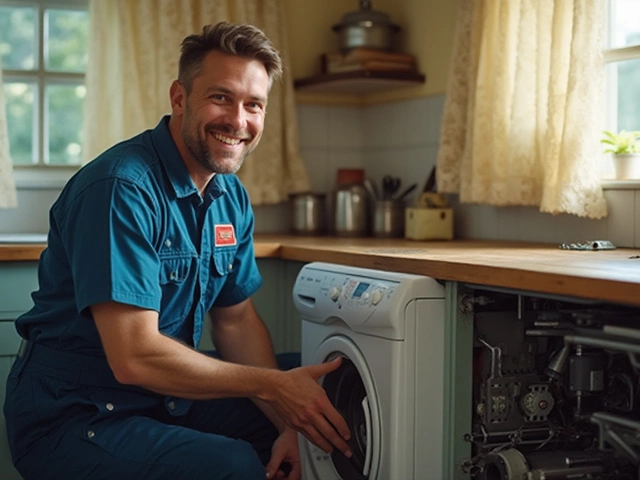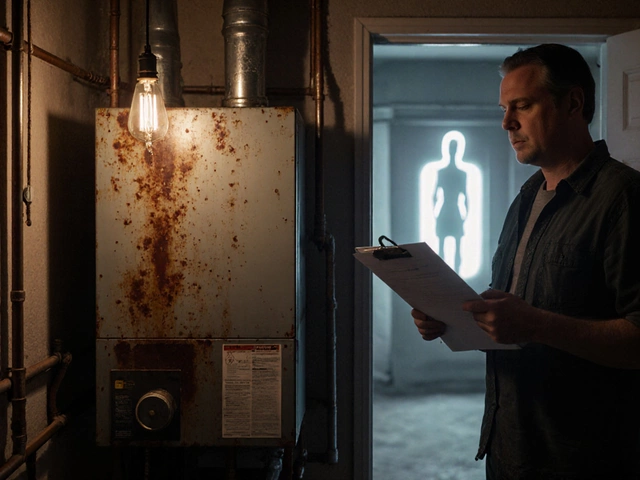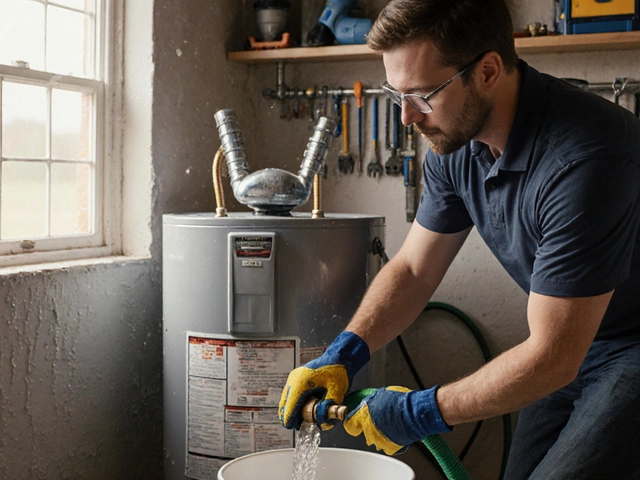Ovens are the unsung heroes of kitchens, tirelessly turning out meals day after day. But like any trusty companion, they sometimes need a bit of TLC—or even replacement when things go beyond repair. When an oven starts misbehaving, it raises a common question: should you fix it or just buy a new one? This decision isn’t always straightforward and depends on a myriad of factors, from the cost of repairs to the efficiency of newer models.
In the world of home appliances, it’s not unusual to grapple with this dilemma. After all, both options have their pros and cons, and the stakes can be high if your oven gives up right before a big dinner party. This article will guide you through this crucial decision, helping you weigh your options wisely so your kitchen remains a sanctuary of sizzling success.
- Identifying Common Oven Issues
- Weighing the Costs of Repair vs. Replacement
- When Repairs Are Worth It
- Signs Your Oven Needs Replacing
- The Benefits of a Brand New Oven
- Practical Tips for Maintaining Your Oven
Identifying Common Oven Issues
When your trusted oven begins to falter, it can throw your culinary routines into disarray. Common issues can range from the oven not heating to erratic temperatures that lead to uneven baking experiences. Understanding these problems is the first step in deciding whether a oven repair is feasible or if it’s time to take the plunge and buy a new model for your kitchen. Many homeowners encounter problems such as the oven not turning on, which might be as simple as a tripped circuit breaker or a more complex wiring issue. Another usual suspect would be a malfunctioning thermostat, which results in the oven either overheating or not reaching the desired temperature, resulting in undercooked or overcooked meals.
Uneven baking is another widely discussed predicament that frustrates even the best of home chefs. A local repair technician once mentioned, “A surprising number of uneven baking issues boil down to damaged door seals letting the heat escape.”
According to Appliance Magazine, 37% of oven problems relate to faulty door seals and hinges.If you notice heat leaking out of the sides, it’s worth checking the condition of your door seals and hinges before thinking your appliance is beyond saving. Constant clicking noises or sporadic lighting of the gas oven can be traced back to an ignition system that requires attention. Sometimes, cleaning the ignition components resolves the issue, but in some cases, replacements are necessary.
If the digital display is on the fritz or shows mysterious error codes, you might be facing a circuit board issue, which can be costly to fix. However, it’s an indispensable part of your oven if you wish to enjoy full control over its functionalities. Humidity or a simple wire disconnection might also wreak havoc on these sensitive components. It’s important to note that while some problems such as a worn-out light bulb or a broken oven timer are minor nuisances, addressing them promptly can prevent bigger troubles down the line. Keeping a close watch for any irregularities and acting quickly can potentially save on expensive repair bills or an untimely appliance replacement.
Weighing the Costs of Repair vs. Replacement
Stepping into the lively debate of whether to fix an existing oven or leap into the market for a new one, you'll find yourself juggling various considerations. The initial and most glaring factor is the cost. Repairing an oven often seems like the frugal choice, especially when faced with hefty upfront prices of newer models that boast cutting-edge features. On average, fixing minor glitches may cost anywhere from $150 to $350, a far cry from the sometimes eye-watering cost of a brand-new oven, which can easily start at $500 for basic models and skyrocket into the thousands for high-end appliances.
Another crucial element in this decision-making process is the age of your oven. It's generally believed that if your oven is older than a decade, thrusting money into repairs might not be justified. An older appliance will likely encounter recurrent issues, and its energy efficiency doesn't hold a candle to modern counterparts. A quote from Consumer Reports notes, "While the upfront cost of a new oven is steep, the savings in energy efficiency and reliability often make the investment worthwhile in the long run." This notion appeals not just to your wallet but also to anyone keen on reducing their carbon footprint.
Your daily routine and cooking habits should also sway your decision. If an oven is an essential part of your household, relied upon daily, interruptions due to repeated breakdowns can quickly turn from a simple inconvenience to a significant lifestyle disruption. A newer model promises reliability with assurances in warranty, sometimes extending over several years, giving you peace of mind each time you orchestrate a family gathering or experiment with new recipes.
Apart from pondering the economics, it's wise to consider the technological advancements that modern ovens offer. Features like smart connectivity, convection cooking, and self-cleaning options are understandably tempting and could significantly enhance your culinary escapades. Assessing these hard-to-ignore benefits against the simple mechanical fix of an old unit might tip the scales in favor of purchasing a fresh oven.
Finally, let's not downplay the sentimental value and sense of continuity an old oven can hold. Some might argue that quality craftsmanship isn't what it used to be, preferring to keep fighting with a tried and trusted appliance rather than rolling the dice on a new one, especially if repair parts are readily available and you're comfortable with DIY fixes.
In conclusion, the quandary of whether to repair or replace involves more than just monetary calculations. It encapsulates assessing how integral this appliance is to your lifestyle, its energy efficiency, future reliability, and personal attachment. Only after weighing these dimensions can one make a choice that's both economically and personally satisfying.
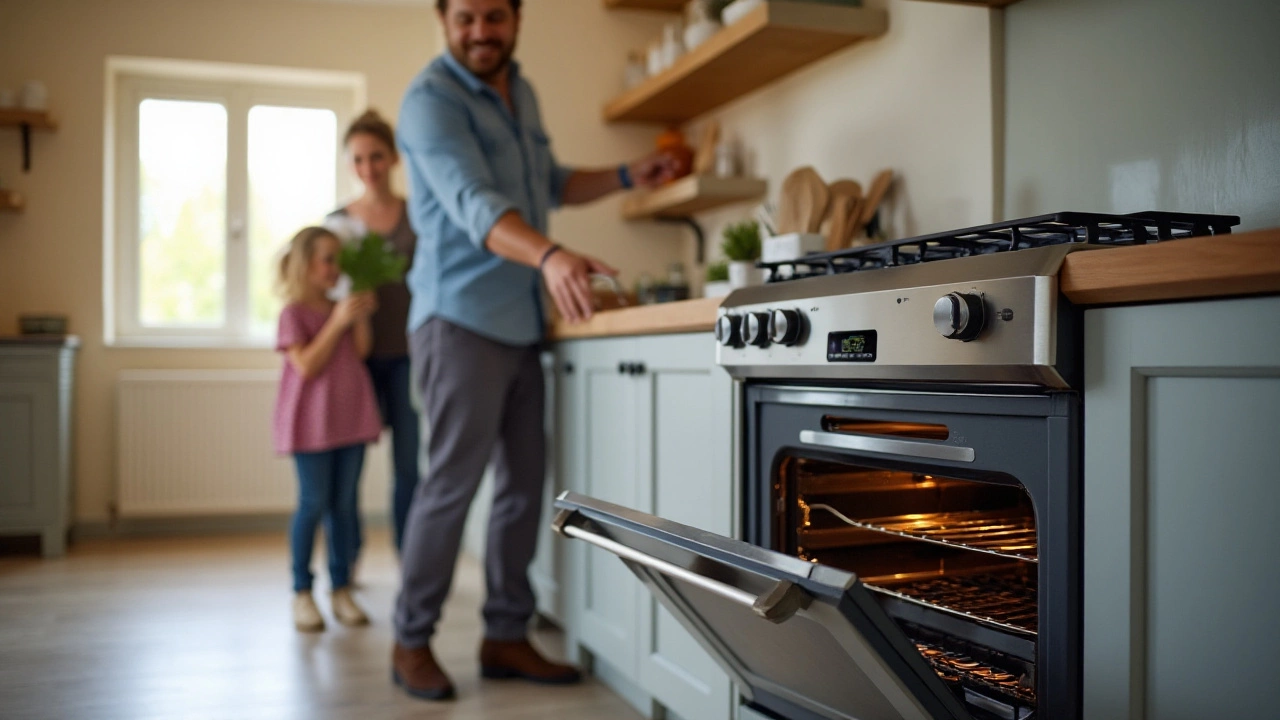
When Repairs Are Worth It
Deciding whether to repair your oven boils down to a few key considerations. Repairing can often be the smart choice, especially if the issue is minor or the appliance is relatively new. Most ovens are built to last, with an average lifespan of 10 to 15 years, and if yours is still well within that range, it can make a lot of sense to fix what's broken. For instance, if your oven is not heating properly, it might only need a new heating element or a thermostat repair, both of which are relatively inexpensive compared to buying brand new. For anyone with a somewhat recent oven experiencing minor hiccups, repair is usually more cost-effective.
Moreover, if your oven hasn't yet hit the decade mark and hasn't given you trouble before, a repair might not only be sufficient but smartly frugal. Consider appliances from reputable brands known for their durability. An oven still sounding its original hum is often a good candidate for repairs. Many appliance repair specialists agree that if repairing costs are less than half the price of buying new, repairs are a worthy investment. If an appliance repair guide suggests simple fixes like replacing a door seal or recalibrating the thermostat, these are not only easy on the wallet but often restore full function with minimal hassle.
Another aspect to consider is the repair market itself. With a wide range of DIY solutions or affordable professional services, fixing an oven doesn't need to light your wallet on fire. Oven repair technicians often have spare parts for older models, and minor hiccups don't necessarily merit the landfill. If you choose to go with repair services, make sure to check customer reviews that give insight into the quality and reliability of repairs. In many casual kitchen setups, owners find that a blend of professional and DIY solutions effectively restores their stoves.
An experienced appliance technician once remarked, "With the right care, even an aging oven can feel like new again." This adage rings true for those who cherish the character of a well-used kitchen gadget.
The environmental impact is also worth considering. Repairing instead of replacing reduces electronic waste. For conscientious consumers, this environmental factor can tip the scales towards repair. Many people find personal satisfaction in the knowledge they are prolonging an appliance's life rather than scrapping it prematurely. This decision harmonizes well with sustainable living principles, an added benefit that resonates on a broader scale.
Ultimately, deciding when repairs make sense involves a balance of age, cost, effort, and personal preference. Look at your repair options with a pragmatic eye, considering each stove's unique wear and tear. Kitchens run happier when their trusted appliances are kept in working order, and choosing to repair can keep spirits—and the oven's flame—burning brightly.
Signs Your Oven Needs Replacing
Knowing when it's time to let go of an old oven can be a tough call, but paying attention to certain warning signs can help make this decision clearer. One of the most telling signs is the frequency of repairs. If your oven has repeatedly found itself on the repair bench over the last few years, it might be a signal that the appliance is reaching the end of its life cycle. Constant breakdowns not only cause inconvenience but also lead to escalating repair costs that could soon match or exceed the price of a new appliance.
A significant decline in performance is another red flag. If your once-reliable oven has started taking twice as long to heat up or no longer cooks food evenly, these issues might be beyond repair. This decline can often be attributed to wear and tear in key components such as the thermostat or heating elements, which are crucial for optimal oven function. Some homeowners might try to mitigate these problems with professional fixes, but persistent performance issues usually indicate it’s time to invest in a new model.
Sometimes, the tell-tale signs aren't just about performance but involve physical damage. Broken oven doors, cracked glass, and damaged control panels are not just aesthetic issues; they can lead to hazardous situations in the kitchen. Imagine the danger of heat escaping from a faulty door or electrical problems stemming from a malfunctioning control panel. When safety becomes a concern, replacing an oven is the wisest choice, even if repairs might temporarily resolve issues.
Energy efficiency is a topic that homeowners are increasingly paying attention to. Older ovens often guzzle up more electricity than their newer counterparts, which have been engineered with energy-saving technologies. If you notice your electric bills climbing with striping-you-bare consistency, it might be the inefficiency of your oven playing a significant role. Modern ovens often feature advanced insulation and optimized fuel usage, resulting in cost savings over time. Hence, replacing an outdated appliance could be more beneficial both from energy and financial standpoints.
According to a report from the U.S. Department of Energy, replacing a 15-year-old electric oven with a new Energy Star-rated model could result in annual savings of up to $472 on energy bills.
The simple age of your oven might be reason enough for an upgrade. Most ovens are designed to last around 10-15 years, depending on usage and brand. When they move beyond this threshold, even high-end models can start to exhibit signs of wear and deterioration. If your oven is nearing or past this age range, it could be time to consider more modern models, which offer better efficiency and innovative cooking features which could enhance your culinary adventures.

The Benefits of a Brand New Oven
Having a brand new oven in your kitchen can bring along a plethora of advantages that extend beyond simply having a shiny new appliance. Modern ovens often come packed with advanced technological features that greatly enhance cooking efficiency and convenience, such as convection cooking, self-cleaning capabilities, and precise temperature controls. Convection ovens, for instance, use fans to circulate hot air around food, which not only cooks food faster but also ensures more even cooking results. This feature alone can transform everyday cooking, saving precious time and delivering meals that are cooked to perfection.
Moreover, the array of energy-efficient designs in new ovens can significantly lower your utility bills, making them an environmentally-friendly choice. Most of the contemporary models are designed to use electricity more judiciously, and they are generally better insulated compared to their older counterparts, which reduces the amount of energy wasted during cooking. For those concerned about the ecological footprint of their household appliances, choosing an oven with a high energy star rating is a smart move.
Another compelling benefit is the aesthetic upgrade to your kitchen’s look. New ovens are available in a range of sleek, modern designs, which can serve as a central piece in any kitchen, enhancing both the style and functionality of the space. Brands today offer choices that blend industrial chic with user-centric designs, allowing homeowners to match their appliance to their kitchen theme effortlessly. A visually pleasing appliance can bring a certain pride and joy in everyday cooking tasks, turning cooking into an even more enjoyable process.
"The latest advances in appliance technology have made cooking more efficient and inspired users to explore their culinary capabilities," says renowned culinary expert and chef Susan Wilson.
With a new oven, you also benefit from a warranty and better safety features, providing peace of mind. The latest models often include smart alerts and auto shut-off features, reducing the risk of overheating or power wastage. Thus, investing in a new oven is investing in a safer kitchen. In terms of ease of use, many ovens now come with intuitive digital controls and smart connectivity features that allow you to control and monitor your cooking process remotely through mobile apps. This, once considered a futuristic concept, is now a reality, bringing added flexibility and ease to busy households.
Finally, many notable brands offer enticing post-purchase support services, such as maintenance packages, to keep your oven in top working condition for years to come. This can prolong the lifespan of the appliance significantly, ensuring that you get the most out of your investment. A brand new oven is not just a purchase; it’s an upgrade to your lifestyle, potentially revolutionizing your cooking experience and simplifying kitchen management.
Practical Tips for Maintaining Your Oven
Having a well-functioning oven is essential for anyone who loves cooking. Regular maintenance not only keeps your appliance in tip-top shape but also extends its lifespan, saving you from costly oven repair. Start by giving your oven a good cleaning. The first step is to remove all racks and scrape out any leftover crumbs. Use a mixture of baking soda and water to make a thick paste, applying it evenly inside. Let it sit overnight to break down any stubborn grease. In the morning, wipe everything down with a damp cloth. For glass doors, vinegar works wonders by cutting through smudges, offering a sparkling view of your culinary creations.
Check the door seals regularly. A faulty seal can lead to heat loss of up to 20%, according to energy specialists. It’s important since this translates to uneven baking, higher energy bills, and increased wear on the oven. Run your fingers along the seal to check for breaks or tears. If it's defective, replacing it is straightforward, usually by pulling out the old gasket and snapping in a new one. This small effort can make a big difference in performance and energy efficiency.
Another critical step is to pay attention to the heating elements. If your oven isn’t heating evenly, or one section seems cooler, it may be due to a faulty element. Always make sure the power is off before inspecting. If replacing is necessary, most elements plug in like a lamp cord so they can be replaced without much hassle.
"Appliance experts say regular maintenance can extend an oven's life by more than five years," shares KitchenAid technician Daniel Summers.
Consider checking the temperature accuracy every few months with an oven thermometer. This can ensure your meals are cooked precisely, and it helps avoid surprises, like undercooked chicken or burnt cookies. Compare the reading of the thermometer with your oven’s indicated temperature and adjust accordingly by referring to your oven's manual.
Kitchen maintenance also involves ensuring the exterior remains in shape. Use a damp cloth with mild soap to clean knobs and handles, clearing away sticky fingerprints and spills. Regular attention can prevent the buildup of grime that affects both appearance and function. Lastly, if you're using your oven for storage when not baking, use caution. Be mindful that storing flammable items inside can be dangerous if accidentally forgotten when the oven is in use.
Following these maintenance tips can not only enhance your cooking results but can lead to long-term savings. Keeping your oven in good condition is a worthy investment both for your kitchen’s performance and your safety.

